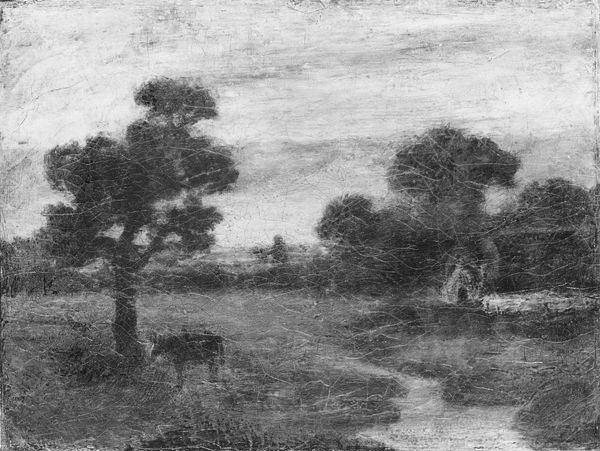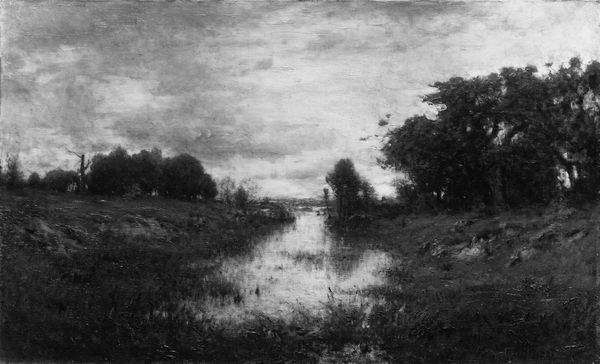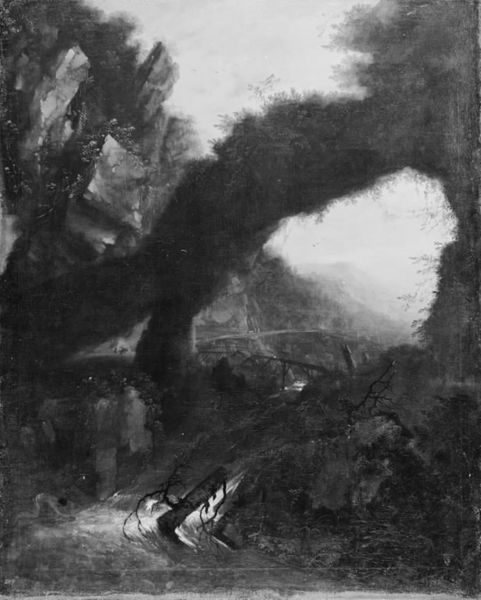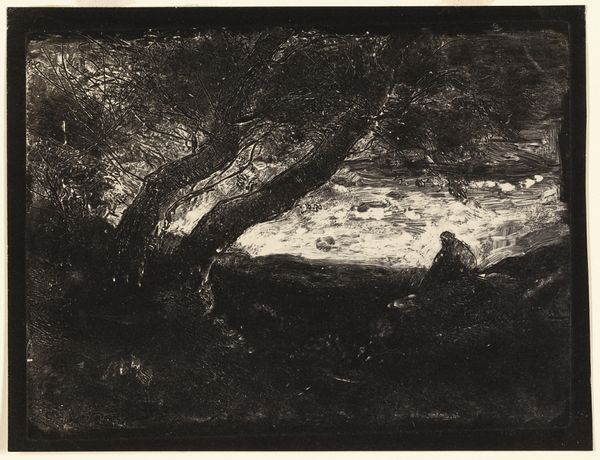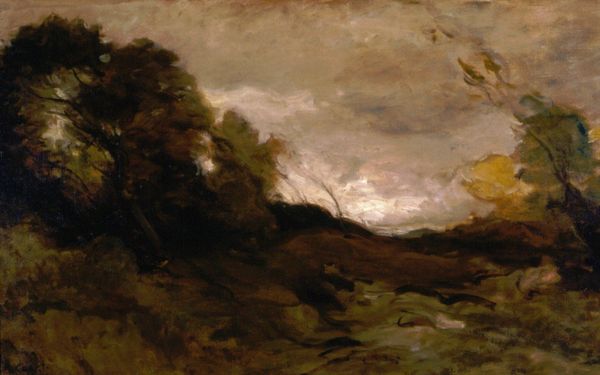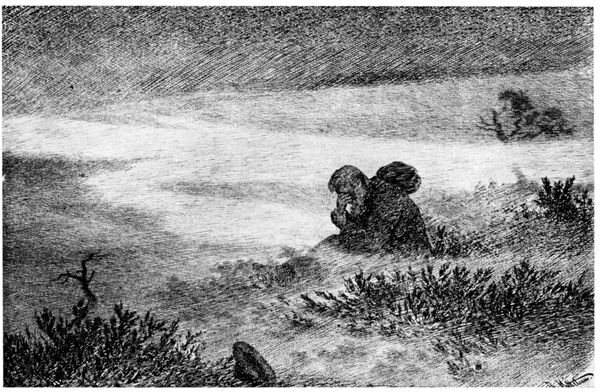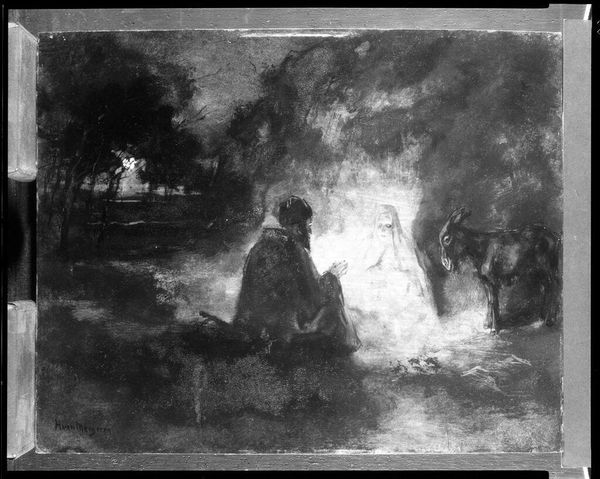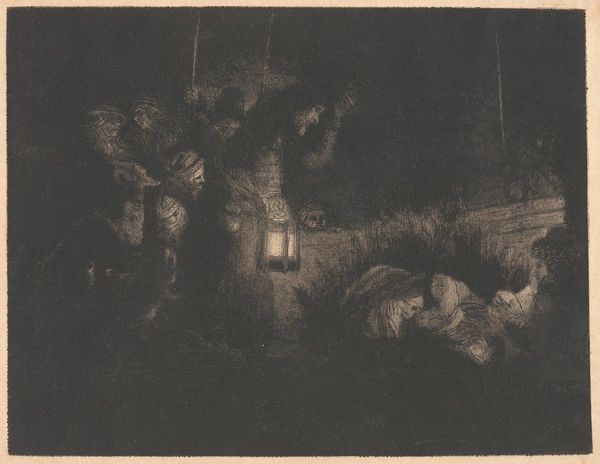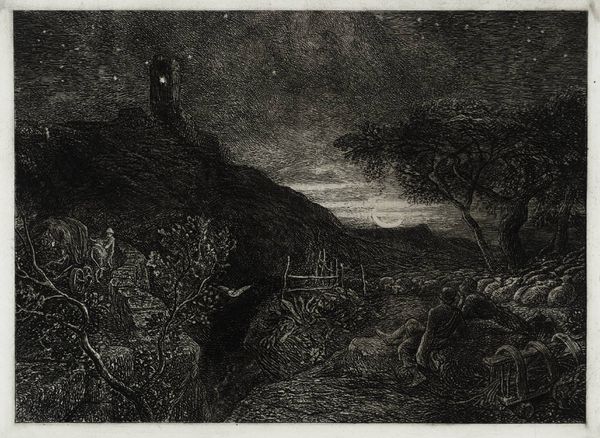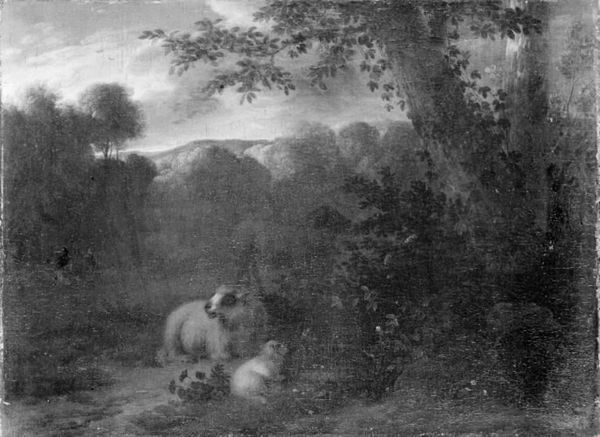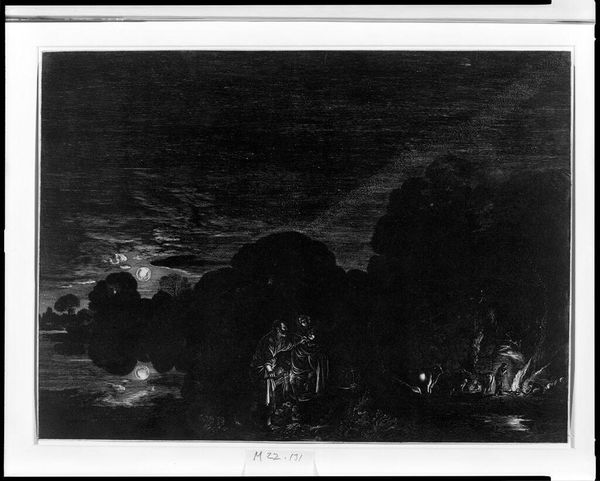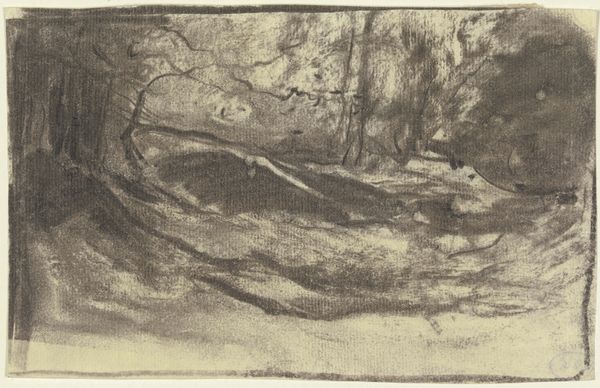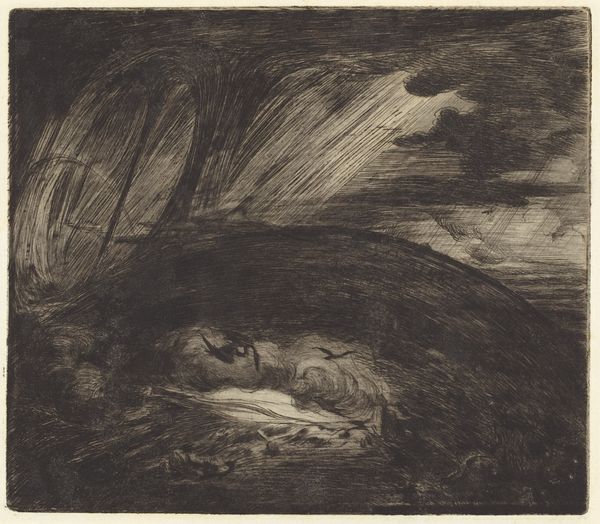
drawing, charcoal
#
drawing
#
narrative-art
#
landscape
#
charcoal drawing
#
monochrome colours
#
charcoal art
#
black and white
#
symbolism
#
charcoal
#
monochrome
#
charcoal
#
monochrome
Dimensions: 14 1/8 x 18 in. (35.9 x 45.7 cm)
Copyright: Public Domain
Curator: At first glance, this artwork evokes such desolation. The dramatic monochrome shades really enhance the narrative. Editor: Indeed. What you’re observing is Robert Loftin Newman’s charcoal drawing, "Hagar and Ishmael," created between 1893 and 1894, currently held at the Metropolitan Museum of Art. Curator: Newman captures this moment of immense vulnerability. You can feel the despair radiating from Hagar, abandoned in the wilderness with her son. It certainly underscores patriarchal narratives and societal indifference to marginalized women and children, doesn't it? Editor: Absolutely, and this scene has resonated throughout art history. It speaks to themes of exile and divine intervention. The dramatic use of light and shadow highlights the emotional intensity of Hagar's plight. Note the dark landscape mirroring her internal state. I find that the composition and artistic decisions elevate the biblical narrative beyond a simple illustration of a known event. Curator: The landscape itself feels symbolic – oppressive, almost actively hostile toward them. And consider the choice of medium. The use of charcoal creates a sense of rawness, perfectly suited to depicting such a stark and unforgiving situation. I’m struck by how Newman allows us to bear witness to their suffering. Do you think it challenges the typical triumphant heroism prevalent in art? Editor: Certainly. By focusing on Hagar's vulnerability and the precarity of their situation, Newman creates a visual narrative that aligns with contemporaneous movements advocating for social justice. This piece enters into the established visual repertoire of biblical depictions while offering a subtle commentary on power structures of his own era. Curator: Well, this work has undoubtedly invited us to delve into critical discussions surrounding gender, faith, and social structures of that time. Its historical perspective still triggers vital conversations. Editor: Agreed, a truly affecting work. It demonstrates how studying artwork from specific periods lets us unravel social issues.
Comments
No comments
Be the first to comment and join the conversation on the ultimate creative platform.
